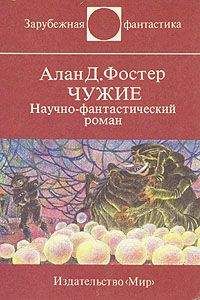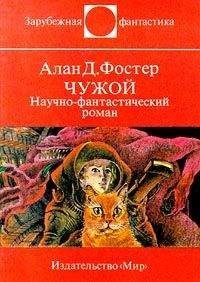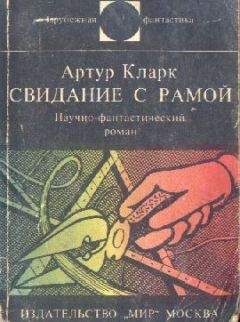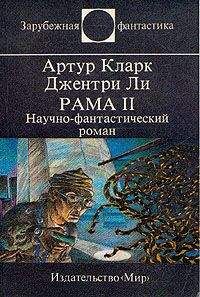Жемчужина Эйлера - Дэвид С. Ричесон

Помощь проекту
Жемчужина Эйлера читать книгу онлайн
Frost, R. (2002). The poetry of Robert Frost: The collected poems. New York: Henry Holt.
Funkenbusch, W. W. (1974). Classroom notes: From Euler's formula to Pick's formula using an edge theorem. Amer. Math. Monthly 81 (6), 647–648.
Gardner, M. (1956). The Afghan bands. In Mathematics, Magic and Mystery, 70–73. New York: Dover.
--. (1975a). Mathematical Carnival. New York: Knopf.
--. (1975b). Mathematical games: Six sensational discoveries that somehow or another have escaped public attention. Scientific American 232, April, 127–131.
--. (1988). Six sensational discoveries. In Time Travel and Other Mathematical Bewilderments, 125–138. New York: W. H. Freeman.
--. (1990). Mobius bands. In Mathematical Magic Show, 123–136. Washington DC: Mathematical Association of America.
--. (1995). The four-color map theorem. In New Mathematical Diversions, 113–123. Washington DC: Mathematical Association of America.
--. (2005). Martin Gardner's mathematical games: The entire collection of his Scientific American columns. MAA Spectrum series (on CD). Mathematical Association of America.
Gaskell, R. W., M. S. Klamkin, and P. Watson (1976). Triangulations and Pick's theorem. Math. Mag. 49 (1), 35–37.
Gaukroger, S. (1995). Descartes: An intellectual biography. Oxford: Clarendon Press.
Gauss, C. F. (1828). Disquisitiones generales circa superficies curvas. Gottingen: Dieterich.
--. (1877). Zur mathematischen theorie der electrodynamischen wirkun-gen. In Werke, vol. 5. Koniglichen Gesellschaft der Wissenchaften zu Gottingen.
Gillispie, C. C. (ed.) (1970–1990). Dictionary of Scientific Biography, Volumes 1-16. New York: Charles Scribner's Sons.
Gingerich, O. (1973). Kepler, Johannes. In C. C. Gillispie (ed.), Dictionary of scientific biography. Vol. 7, 289–312. New York: Charles Scribner's Sons.
Girard, A. (1629). Invention nouvelle en algebre. Amsterdam: Guillaume Jansson Blaeuw.
Gluck, H. (1975). Almost all simply connected closed surfaces are rigid. In Geometric topology (Proc. Conf., Park City, Utah, 1974), 225-39. Lecture Notes in Math., Vol. 438. Berlin: Springer.
Gorman, P. (1979). Pythagoras: A life. London: Routledge & Kegan Paul.
Gottlieb, D. H. (1996). All the way with Gauss-Bonnet and the sociology of mathematics. Amer. Math. Monthly 103 (6), 457–469.
Graham, L. R. (1993). Science in Russia and the Soviet Union: A short history. Cambridge: Cambridge University Press.
Graves, R. P. (1889). Life of Sir William Rowan Hamilton, vol. 3. Dublin: Hodges, Figgis, & Co.
Grunbaum, B. (2003). Convex polytopes (2nd ed.). Vol. 221 of Graduate texts in mathematics. Prepared and with a preface by Volker Kaibel, Victor Klee, and Gunter M. Ziegler. New York: Springer-Verlag.
Grunbaum, B., and G. C. Shephard (1993). Pick's theorem. Amer. Math. Monthly 100 (2), 150–161.
Guillemin, V., and A. Pollack (1974). Differential topology. Englewood Cliffs, NJ: Prentice-Hall.
Guthrie, W. (1962). A history of Greek philosophy: The earlier presocratics and the Pythagoreans, vol. 1. Cambridge: Cambridge University Press.
Hadamard, J. (1907). Erreurs de mathematicians. L'intermediaire des mathe-maticiens 14, 31.
Hales, T. C. (2005). A proof of the Kepler conjecture. Ann. of Math. (2) 162 (3), 1065–1185.
Hamilton, R. S. (1982). Three-manifolds with positive Ricci curvature. J. Differential Geom. 17 (2), 255–306.
Hankel, H. (1884). Die Entwicklung der Mathematik in den letzten Jahrhunder-ten. Tubingen: Verlag und Druck von Franz.
Harcave, S. (1964). Russia: A history (5th ed.). Philadelphia: J. B. Lippincott.
Hardy, G. H. (1992). A mathematician's apology. Cambridge: Cambridge University Press.
Hartley, J. M. (2003). Governing the city: St. Petersburg and Catherine II's reforms. In A. Cross (ed.), St. Petersburg: 1703–1825, 99-118. London: Palgrave Macmillan.
Hatcher, A. (2002). Algebraic topology. Cambridge: Cambridge University Press.
Hayes, B. (2006). Gauss's day of reckoning: A famous story about the boy wonder of mathematics has taken on a life of its own. Ame rican Scientist 94 (3), 200–205.
Heath, T. (1981). A history of Greek mathematics: From Aristarchus to Diophantus, vol. II. Corrected reprint of the 1921 original. New York: Dover.
Hemingway, E. (1960). Death in the afternoon. New York: Charles Scribner & Sons.
Hessel, J. F. (1832). Nachtrag zu dem Eulerschen Lehrsatz von Po^dern. Journal fur die Reine und Angewandte mathematik 8, 13–20.
Hierholzer, C. (1873). Uber die mglichkeit, einen linienzug ohne wiederhol-ung und ohne unterbrechnung zu umfahren. Mathematische Annalen 6, 30–32.
Hilbert, D., and S. Cohn-Vossen (1952). Geometry and the imagination. Translated by P. Nemenyi. New York: Chelsea Publishing Company.
Hollingdale, S. (1989). Makers of mathematics. London: Penguin Books, a Pelican Book.
Hopf, H. (1925). Uber die curvatura integra geschlossener Hyperflachen. Math. Ann. 95, 340–367.
--. (1926a). Abbildungsklassen n-dimensionaler Mannigfaltigkeiten. Math. Ann. 96, 209–224.
--. (1926b). Vectorfelder in n-dimensionalen Mannigfaltigkeiten. Math. Ann. 96, 225–249.
--. (1935). Uber die Drehung der Tangenten und Sehnen ebener Kurven. Comp. Math. 2, 50–62.
Hopkins, B., and R. Wilson (2004). The truth about Konigsburg. Col. Math. J. 35 (3), May, 198–207.
Hoppe, R. (1879). Erganzung des eulerschen satzes von den polyedern. Archiv der Mathematik und Physik 63, 100–103.
Itard, J. (1972). Girard, Albert. In C. C. Gillispie (ed.), Dictionary of scientific biography. Vol. 5, 408–410. New York: Charles Scribner's Sons.
--. (1973). Legendre, Adrien-Marie. In C. C. Gillispie (ed.), Dictionary of scientific biography. Vol. 8, 135–143. New York: Charles Scribner's Sons.
Jackson, A. (2006). Conjectures no more? Consensus forming on the proof of the Poincare and geometrization conjectures. Notices Amer. Math. Soc. 53 (8), 897–901.
James, I. M. (1999). From combinatorial topology to algebraic topology. In History of topology, 561-73. Amsterdam: North-Holland.
--. (2001). Combinatorial topology versus point-set topology. In Handbook of the history of general topology, Vol. 3 of History of Topology Series, 809–834. Dordrecht: Kluwer Acad. Publ.
Jones, P. S. (1994). Irrationals or incommensurables I: Their discovery and a «logical scandal». In F. J. Swetz (ed.), From five fingers to infinity: A journey through the history of mathematics, 172–175. Chicago: Open Court.
Jordan, C. (1866a). Des contours traces sur les surfaces. J. Math. Pures Appl. (2) 11, 110–130. See also Oeuvres, vol. 4, 91-112, Paris: Gauthier-Villars et cie, 1964.
--. (1866b). Recherches sur les polyedres. Comptes rendus des Seances de l'Academie des Sciences 62, 1339–1341.
Juskevic, A. P., and E. Winter (1965). Leonhard Euler und Christian Goldbach: Briefwechsel 1729–1764. Berlin: Akademie-Verlag.
Katz, V. J. (1993). A history of mathematics: An introduction. New York: Harper Collins College Publishers.
Kauffman, L. H. (1987a). On knots, vol. 115 of

























